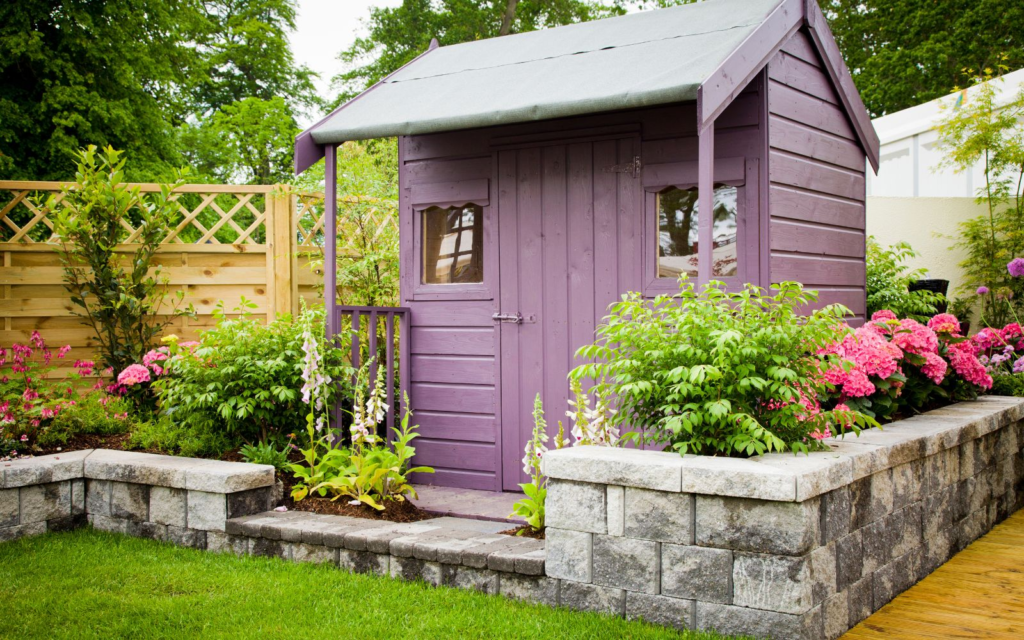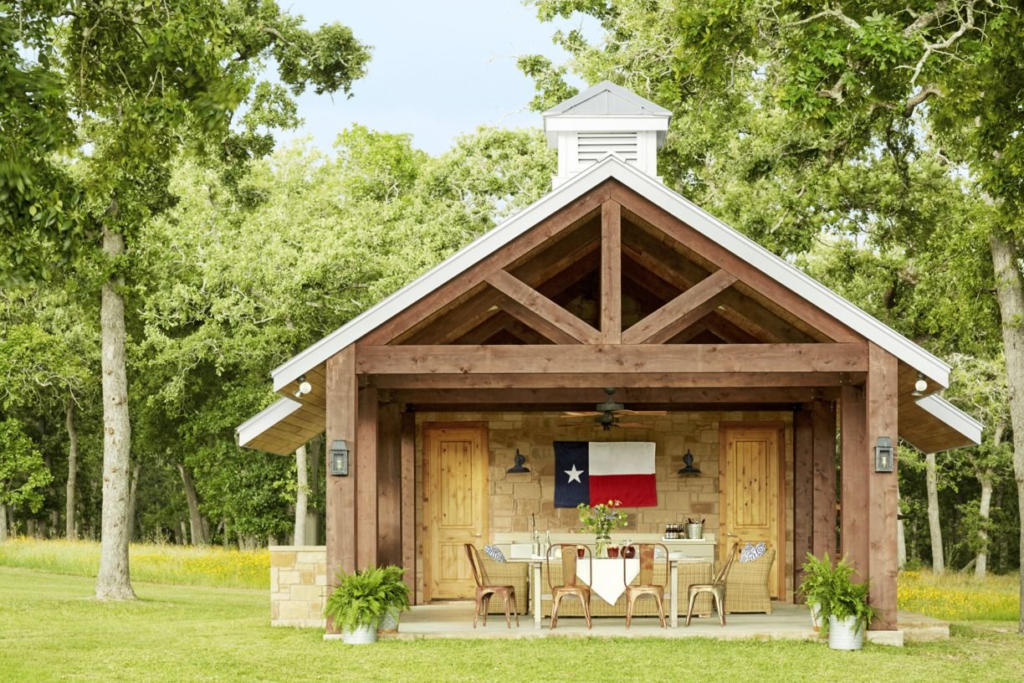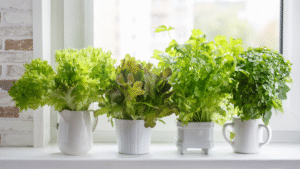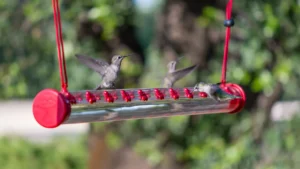Garden Shed Ideas: How to Grow and Use Culinary Herbs
Are you looking to transform your garden shed into a functional space for growing and processing culinary herbs? Whether you have a spacious outbuilding or a compact shed, there are countless ways to create an herb haven that enhances your cooking and gardening experiences. This comprehensive guide will walk you through creative garden shed ideas specifically designed for herb enthusiasts across the United States.
Why Convert Your Garden Shed for Herb Growing?
Converting your garden shed into an herb-growing station offers numerous benefits:
- Year-round herb access: Grow fresh herbs regardless of climate or season
- Protected environment: Shield delicate herbs from extreme weather conditions
- Organized space: Keep all your gardening tools and harvested herbs in one location
- Space efficiency: Maximize vertical space in a small footprint
- Cost-effective: Save money on store-bought herbs while enjoying superior freshness
According to the National Gardening Association, herb gardening has surged in popularity, with over 35% of American households now growing at least some herbs at home. Your garden shed can become the perfect hub for joining this growing trend.
Creating the Perfect Herb-Growing Environment
Climate Control Considerations
Maintaining the right environment is crucial for successful herb cultivation. Most culinary herbs prefer temperatures between 65-75°F (18-24°C) during the day and slightly cooler temperatures at night.
If you’re converting your shed for year-round herb growing, consider these climate control options:
- Insulation: Add wall and ceiling insulation to regulate temperature
- Ventilation: Install adjustable vents or small windows to control airflow
- Heating options: Consider small space heaters or heating mats for winter months
- Cooling solutions: Add portable fans or small A/C units for summer heat management
The USDA Agricultural Research Service provides excellent resources on optimal growing conditions for herbs in different climate zones across the US. You can check their specific recommendations at https://www.ars.usda.gov/plains-area/gfnd/gfhnrc/docs/news-2013/herbs/.

Lighting Solutions
Light is essential for herb growth. If your shed has limited natural light, you’ll need to incorporate artificial lighting:
- South-facing windows: Maximize natural light with additional windows when possible
- Grow lights: LED grow lights provide energy-efficient full-spectrum lighting
- Light timers: Automate lighting schedules for consistent growth
- Reflective surfaces: Paint interior walls white or use reflective material to amplify light
Most culinary herbs need 6-8 hours of direct light daily. Position your herbs according to their light requirements, with sun-loving varieties like basil and rosemary in the brightest spots.
Innovative Storage and Organization Systems
An efficient herb shed requires thoughtful organization. Here are some storage ideas to maximize your space:
Vertical Growing Systems
Vertical systems maximize growing capacity in limited space:
- Wall-mounted planters: Install tiered planters or pocket systems on walls
- Hanging baskets: Utilize ceiling space for trailing herbs like thyme
- Pegboard systems: Create customizable tool and small pot storage
- Ladder shelving: Use decorative ladder shelves for both display and function
- Stackable containers: Use modular growing containers that stack efficiently
Work Station Design
A functional work area is essential for processing your herbs:
- Potting bench: Install a sturdy table for transplanting and harvesting
- Drying racks: Add wall-mounted or hanging racks for drying harvested herbs
- Sink access: Consider adding a small utility sink for washing herbs
- Storage drawers: Organize seeds, labels, and small tools in dedicated drawers
- Preservation station: Designate an area for preserving herbs through drying or freezing
Top Culinary Herbs to Grow in Your Garden Shed
When selecting herbs for your shed, consider growth habits, space requirements, and culinary uses. Here’s a table of popular culinary herbs with their growing requirements and uses:
| Herb | Light Needs | Water Requirements | Temperature Range | Container Size | Culinary Uses |
|---|---|---|---|---|---|
| Basil | Full sun | Moderate, consistent | 65-85°F | 8″ deep | Italian dishes, pesto, salads |
| Cilantro | Partial sun | Moderate | 50-75°F | 8″ deep | Mexican, Asian cuisines |
| Mint | Partial sun | High | 55-70°F | 12″ deep | Teas, desserts, cocktails |
| Rosemary | Full sun | Low | 60-80°F | 12″ deep | Meats, breads, oils |
| Thyme | Full sun | Low | 60-80°F | 6″ deep | Soups, stews, meats |
| Parsley | Partial sun | Moderate | 60-75°F | 8″ deep | Garnish, tabbouleh, sauces |
| Oregano | Full sun | Low | 60-80°F | 6″ deep | Italian, Greek dishes |
| Chives | Partial sun | Moderate | 60-70°F | 6″ deep | Garnish, potato dishes, eggs |
| Sage | Full sun | Low | 60-70°F | 8″ deep | Poultry, stuffing, teas |
| Dill | Full sun | Moderate | 60-75°F | 10″ deep | Pickles, fish, dressings |
Herb Garden Shed Layout Ideas

Compact Shed Designs (Under 50 sq ft)
Even in a small shed, you can create an efficient herb growing space:
- Corner growing station: Utilize corner spaces with tiered shelving
- Door-mounted systems: Install narrow pocket planters on the door interior
- Central island: Place a movable workstation in the center with storage underneath
- Wall grid systems: Install customizable grid panels for hanging containers
- Fold-down workbench: Save space with a hinged table that folds against the wall
Spacious Shed Configurations (50+ sq ft)
With more space, you can expand your herb operation:
- Zone system: Create dedicated areas for growing, processing, and storing
- Indoor/outdoor connection: Install a potting bench under a window that opens
- Greenhouse hybrid: Replace part of the roof with transparent panels for natural light
- Drying room: Dedicate a small section with good air circulation for drying herbs
- Teaching space: Include seating for herb workshops or enjoyment of your herb garden
Advanced Technology for Your Herb Shed
Incorporating technology can enhance your herb growing experience:
- Automated irrigation: Install drip systems or self-watering containers
- Climate monitors: Use digital thermometers and humidity gauges
- Smart controllers: Automate lighting and watering schedules
- Air circulation: Add programmable fans for proper ventilation
- Smart speakers: Install voice-controlled assistants to set timers or play music while you work
Seasonal Considerations for Your Herb Shed
Spring and Summer Management
During warmer months, focus on:
- Heat management: Ensure proper ventilation and cooling
- Pest control: Monitor for increased insect activity
- Succession planting: Stagger plantings for continuous harvest
- Water conservation: Collect rainwater for sustainable irrigation
- Shade installation: Add temporary shade cloth for extreme heat periods
Fall and Winter Operation
For cold weather success:
- Insulation check: Ensure your shed is properly sealed before winter
- Supplemental heating: Adjust heating systems for colder temperatures
- Light duration: Increase artificial lighting as daylight decreases
- Reduced watering: Adjust watering schedules for slower winter growth
- Cold-hardy selection: Focus on herbs that tolerate cooler temperatures
Processing and Preserving Your Herb Harvest
Your garden shed can double as a processing center with these ideas:
Drying Methods
Create a dedicated drying area:
- Hanging bundles: Install hooks or lines for traditional air-drying
- Screen drying: Use stacked screens for flat drying
- Dehydrator station: Set up an electric dehydrator with good ventilation
- Oven-drying prep: Create a preparation area for oven-drying methods
- Microwave-drying: Designate a space for quick microwave drying techniques
Storage Solutions
Properly store your preserved herbs:
- Glass jar storage: Organize with labeled glass containers
- Vacuum sealing: Create a station for vacuum-sealed packaging
- Freezer prep: Prepare herbs for freezing in oil or water
- Herb vinegars: Set up a infusion station for flavored vinegars
- Gift preparation: Create a packaging area for sharing your herbal creations
Making Your Herb Shed Sustainable
Incorporate eco-friendly practices into your herb shed design:
- Solar power: Install small solar panels for lighting and fan operation
- Rainwater collection: Add gutters and barrels to collect irrigation water
- Composting station: Create a small composting area for herb trimmings
- Reclaimed materials: Use upcycled containers and furniture
- Natural pest control: Grow companion plants that repel common pests
According to a recent survey by Garden Research, over 67% of American gardeners consider sustainability important in their gardening practices, with herb growers being particularly environmentally conscious.
Creative Uses for Your Herb Harvest
Beyond cooking, your herb shed can facilitate other herb-based projects:

DIY Herb Products
Create a production space for:
- Herb-infused oils: Set up an oil infusion station
- Herbal teas: Create a blending and packaging area
- Herb salts: Designate space for drying herb-salt mixtures
- Herbal soaps: Create simple herb-infused soaps
- Potpourri: Dry flowers and herbs for fragrant mixtures
Educational Opportunities
Your herb shed can become a learning center:
- Plant identification: Create an herb reference library
- Herb workshops: Design a small teaching space
- Journaling station: Keep detailed growing records
- Testing area: Experiment with different growing methods
- Children’s herb garden: Include child-friendly elements for family learning
Budgeting for Your Herb Shed Conversion
Converting your garden shed for herbs doesn’t have to break the bank. Here’s a breakdown of potential costs:
- Basic conversion: $100-$300 (shelving, containers, basic tools)
- Intermediate setup: $300-$700 (adding lighting, improved storage, better workspaces)
- Advanced system: $700-$1,500+ (climate control, automation, extensive growing systems)
Focus on essentials first, then add elements as your herb gardening expands. Many components can be created with repurposed materials to reduce costs.
Maintaining Your Herb Garden Shed
Regular maintenance ensures your herb shed remains functional:
- Seasonal cleaning: Schedule quarterly deep-cleaning sessions
- Tool maintenance: Keep pruners and scissors sharp and clean
- System checks: Regularly test irrigation and lighting systems
- Pest monitoring: Inspect regularly for signs of pests or disease
- Infrastructure review: Check for leaks, damage, or wear annually
Conclusion: Your Perfect Herb Garden Shed
Creating a garden shed dedicated to herbs combines practicality with the pleasure of growing your own culinary ingredients. Whether you’re working with a tiny shed or a spacious outbuilding, the right design choices can transform this space into a productive herb haven.
By implementing these storage solutions, growing techniques, and processing stations, you’ll create a functional space that enhances your culinary adventures while providing a satisfying gardening experience. Your herb garden shed will quickly become one of your favorite places to spend time, connecting you with the timeless tradition of herb cultivation while adding fresh, vibrant flavors to your cooking.
Start small, expand gradually, and watch as your garden shed becomes a productive herb oasis that serves your kitchen year-round. The satisfaction of stepping into your specialized herb shed and selecting perfectly fresh herbs for your cooking is an experience that can’t be matched by store-bought alternatives.






